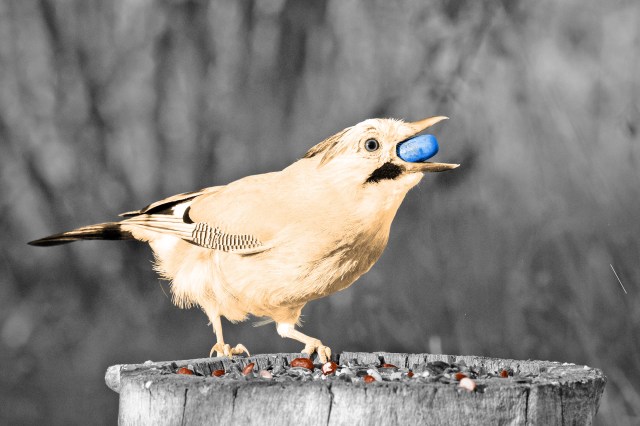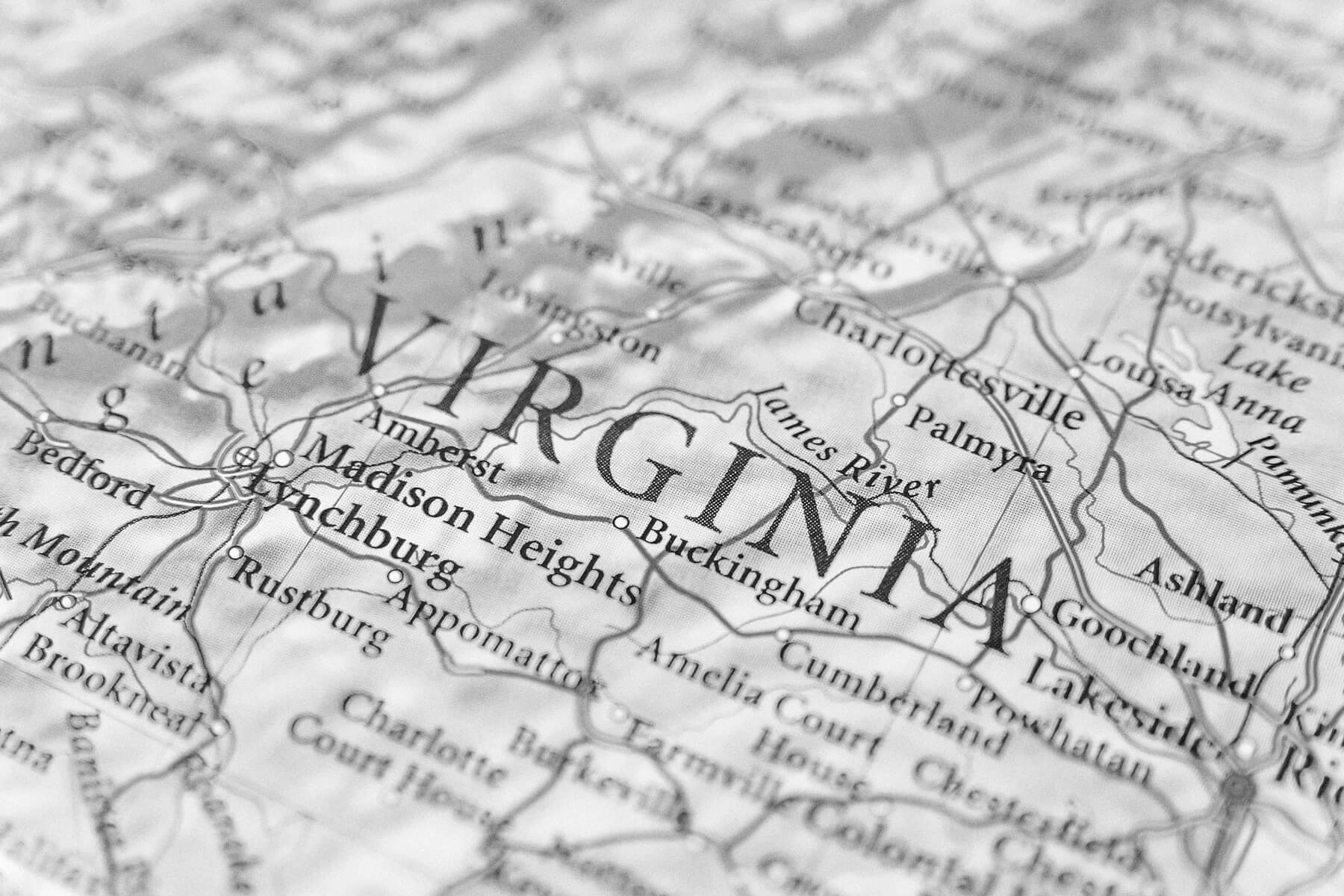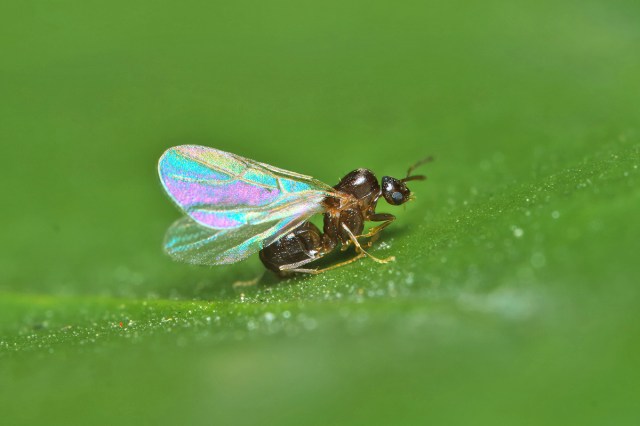
Ants
While the world’s largest brain belongs to one of the biggest animals on the planet, the animal with the largest brain-to-body ratio is decidedly on the other end of the spectrum. Brachymyrmex is a genus of ant that contains some 44 different species. According to a 2009 study in the journal Brain, Behavior, and Evolution, this genus sports the largest brain of any organism relative to its body size, at a staggering 1:8 ratio. Of course, these are still very small brains, weighing only 0.006 milligrams, but the size is proportionally huge when compared to the ants’ overall body mass of just 0.049 milligrams.
As for intelligence, although a single ant’s brain contains only 250,000 neurons (a human brain contains roughly 86 billion), entomologists recognize ants — along with bees and termites — as some of the smartest insects in the world.
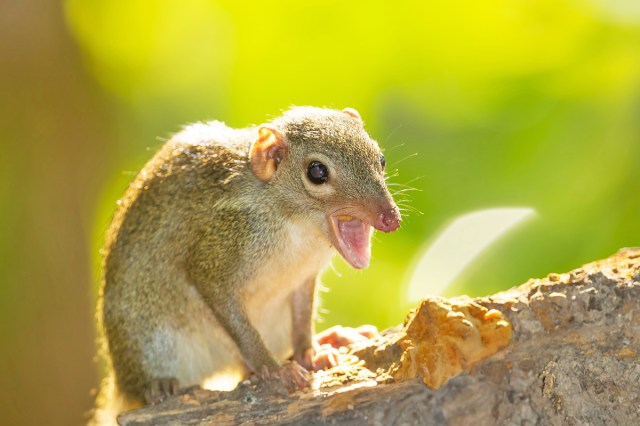
Treeshrews
With its brain making up roughly 10% of its body weight, the treeshrew has the biggest brain-to-body-mass ratio of any mammal on Earth. Although treeshrews look like rodents, the animal is actually more closely related to primates. In fact, a treeshrew’s hands and feet, which are well adapted for grasping, are evidence of this close primate relationship.
Primates are some of the smartest animals on the planet, and treeshrews similarly possess a few impressive cognitive abilities. A 2017 study analyzing an adult treeshrew’s mind found the animal possessed higher brain functions, such as spatial learning and social emotion. The creature also showed signs of mild brain folding, similar to the folds found in the human brain, which result in an increased neuron surface area.Rodent brains, on the other hand, were smooth by comparison.

Manta Rays
Mammals and birds typically have brains 10 times larger than bony fish of a similar body size. However, some aquatic denizens, most notably the manta ray, are the exceptions. With a brain roughly the size of a fist, the manta ray has the highest brain-to-body-mass ratio of any other fish.
That brain gets put to good use: A 2016 study testing a manta ray’s intellectual capabilities found the animals displayed human-like self-awareness by accurately identifying themselves in a mirror. Rays also hunt in groups, which suggests a sophisticated level of social intelligence, and they’ve displayed the ability to map their environment using sight and smell while also retaining an impressive long-term memory.
More Interesting Reads
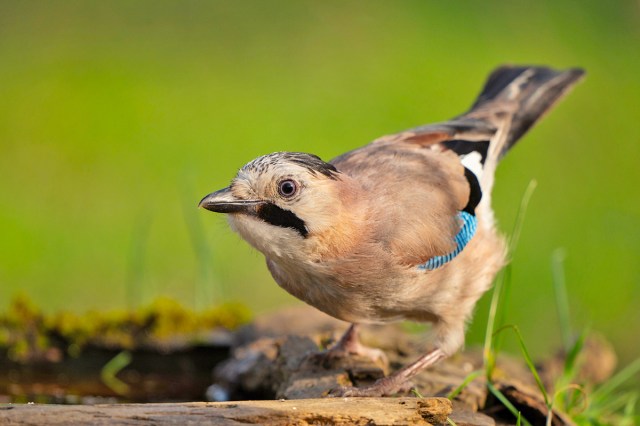
Corvids
When it comes to our feathered friends, corvids — crows, ravens, magpies, and jays — have the highest brain-to-body-mass ratio of any birds at around 1:33. The intelligence of corvids, particularly ravens and crows, has been well-documented in several studies. These animals are capable of incredible mental feats, including the use of tools — a skill once believed to be unique to primates.
One 2020 study reported that ravens, for example, possess the cognitive abilities of a full-grown great ape by just 4 months old, and that at full maturity, a crow’s capacity for problem-solving rivals that of a 7-year-old human. Corvids have also displayed the ability to plan for the future, another cognitive task typically believed to be exclusive to humans and some primates.

Humans
The human brain is a remarkable piece of biological engineering, even if the treeshrew’s got us beat on sheer brain-to-body-mass ratio for mammals. But with a ratio of 1:40, we still have a whole lot of brainpower compared to most animals. That’s partly because the human brain contains far more neurons in the cerebral cortex — the part of the brain associated with higher brain function — than other animals. In fact, we have three times as many neurons as the runner-up, elephants. Indeed, humans have the largest cerebral cortex-to-body-mass ratio of any mammal, which explains why we’re the brainiest creatures on the planet.

